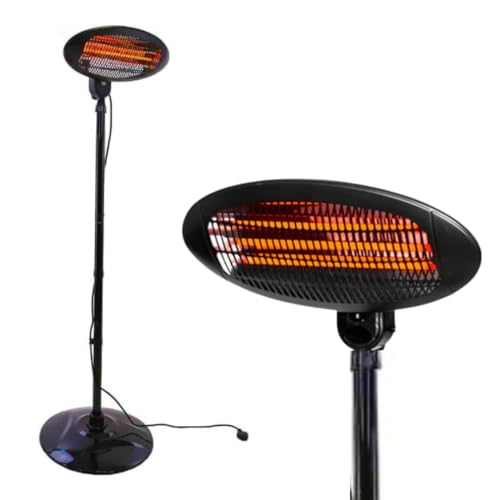How to Choose electric pyramid patio heater
When you want to heat your patio, you've got several options. Unlike propane models that require refills, electric heaters can deliver instant heat by flicking a switch or pressing the button.
They also don't release gasses that might pose a health risk. Some units are equipped with adjustable heating settings to allow for different distances.
Type of Heater
With the proper patio heater, you will be able to comfortably relax in your outdoor living spaces well into the night and across the seasons. There are many kinds of patio heaters, such as freestanding propane and natural gas models as in addition to wall- or ceiling-mounted electric radiant heaters. Your choice will be based on the size of your area, the power sources and personal preference.
Most patio heaters use electricity, liquid or natural gas to generate heat. They release heat through convection heating as well as radiant heating. Their heat output is measured in watts, and can be converted to British thermal units (BTUs) for comparison. Some also have adjustable heat settings to allow for greater flexibility.
Patio heat lamps incorporate an electric burner on a pole and an open-pored screen that reflects flames and sends heat downwards to warm people, objects and furniture. Some outdoor heat lamps have reflective reflectors that sit over the burner, which can be silvered to decrease the amount of heat is lost upwards.
The most common kind of patio heater that is a gas patio heater is usually found in outdoor seating areas of restaurants and bars as they generate lots of heat quickly and spread it evenly across all directions -- great for warming multiple tables. These patio heaters can be portable and run off propane tanks or plumbed into your natural gas line, with the latter providing greater convenience and lower initial installation costs but they require ongoing expenses for fuel.
A growing number of homes are fitted with natural gas lines, making them the ideal solution for those who prefer using gas-powered patio heaters. They are easy to install, but do require a dedicated and functioning gas line to function safely. Natural gas heaters that are portable come with extension hoses to help overcome this issue, however they can pose a tripping danger and could create an additional fire hazard when not in use.

Safety
The majority of electric patio heaters are safe to use in covered areas due to their ability for heat to radiate outward instead of upwards towards combustible materials like the roof. However, they're not designed for use under an open roof; the heater should be placed at minimum 18" from adjacent walls or 6" from the ceiling to avoid fire hazards.
Patio heaters made of propane and gas are generally only safe to be installed in enclosed areas with the proper cover specifically designed for use in open air. They are usually constructed of fire-retardant fabric and have a roof which can be closed. These kinds of patio heaters have safety concerns relating to the flames and fumes they create. They should be kept away from objects that ignite, such as curtains and chairs.
Follow the safety and instructions guidelines of the manufacturer when installing a patio heater or patio heat lamp. Choose a system that has been awarded UL and CSA safety certifications. Be sure to read the owner's instruction manual thoroughly. Be extra cautious around children and pets and make sure the heater isn't near them when it's operating. Some free-standing patio heating devices, such as EUROM's, have an automatic tipping safety that shuts the device off in the event of a fall.
If your patio heater is connected to a natural-gas line, you must examine it regularly and have it tested by a qualified professional for leaks. If the line needs to be replaced, hire a licensed plumbing professional. A professional will be able to determine if the line should be connected to an underground pipe or not. A professional can also ensure that the patio heater is plugged into an outlet that is GFCI (ground fault circuit interrupter) designed to guard against electrical fires and shocks.
Installation
The size of the patio heater is positioned determines the amount of heat it will radiate into the area. It is important that the heater is placed at an appropriate distance from any surfaces like plastic that can deform, and wood, which can become too hot. It is possible to mount the heater on a wall, structure or any other surface with conventional mounting brackets. Certain models have a soft starter that lowers the peak current to protect your circuits.
